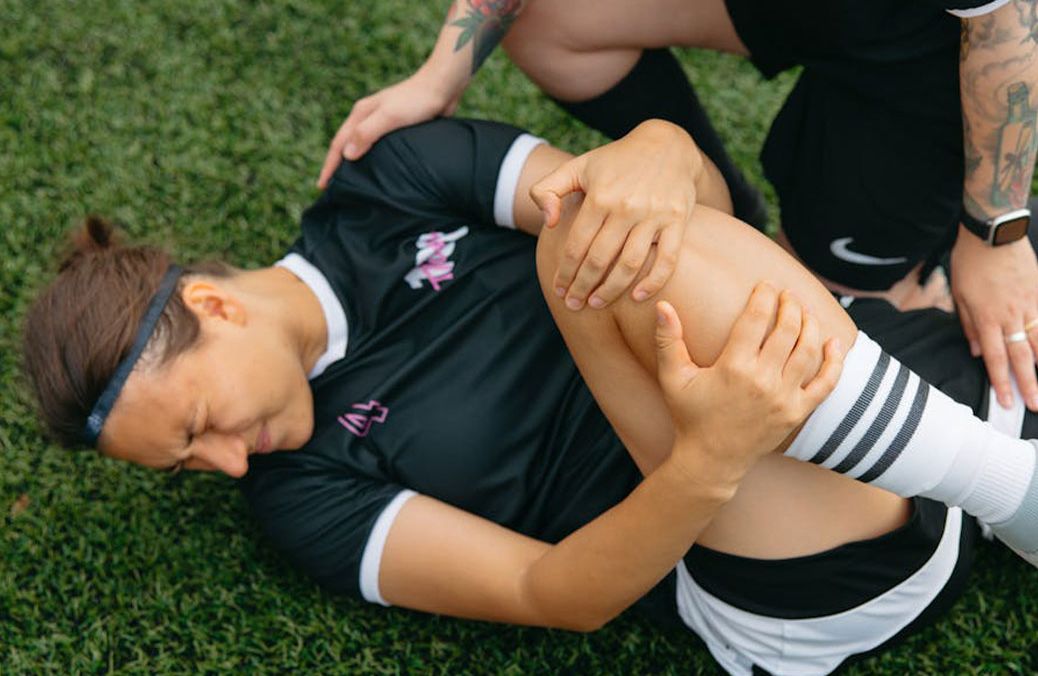Female Athletes 12-17 years old have the Highest Risk of ACL Injury

You’ve probably heard of a high school or professional athlete rupturing their ACL (Anterior Cruciate Ligament) in the knee and being out for the rest of the season. ACL injuries are most common in sports that involve quick changes in direction and speed, such as soccer, basketball, football, lacrosse, and snow-skiing. They typically require surgery and a full year of rehabilitation. Furthermore,
-
20% do NOT return to sports
-
20-30% have a second ACL injury after recovering from the first
-
45% of athletes do not return to the same competitive level of play
-
80% develop early arthritis, limiting activities later in life, and eventually leading to a knee replacement
Most People Don’t Know That 70% Of ACL Injuries Can Be Prevented
While some risk factors cannot be changed, such as age, gender, anatomy, and injury history, other risk factors must be addressed to reduce the likelihood of injury, such as improving neuromuscular control, landing/loading mechanics, and training/recovery time.
You might be wondering what that all means and how are you supposed to do that?
Let Me Explain More About The Anatomy Of The ACL…and How Prevention Works
The ACL is a ligament in the knee that serves as a primary support to keep the knee stable. During a sudden twist, landing, or hyperextension, the ligament can tear partially or completely, leaving the knee unstable.
But why would the ACL tear if the knee is moving the way it is supposed to?
The knee is designed to bend and straighten, primarily, with very slight movement side to side or into rotation. During intense movements in sports, usually while pivoting, decelerating (slowing down), or landing from a jump, the knee may fall into a more medial/inward position (valgus), which forces more rotation or twisting at the knee than ideal. The combination of forces happens very quickly, and if the neuromuscular system (brain and muscles) is not fast enough or strong enough to get the knee back to a safe position, then the ligaments bear the extreme load and can become torn. The force is simply too much for the ACL to sustain without injury.
So how can we prevent injuries?
✔ You can re-train movement patterns to avoid valgus/twisting at the knee.
✔ You can strengthen muscles to protect the knees, take pressure off the ligaments, and stay in a safer alignment.
✔ You can improve reaction time and agility to save yourself before a serious injury occurs.
All of this is possible with simple exercises focusing on neuromuscular training, which not only reduces the risk of injury but elevates overall performance at the same time!


Bulletproof Secrets is a 6 week training program to become stronger, more stable, and more controlled so you avoid injuries and perform better overall
Featured In
Thousands Of Athletes Have Reduced Knee Pain And Had Their Best Seasons With ACL Strong!
COACH SCHUCK, BASKETBALL
Coach Linda Schuck is proactive with her basketball players, but found they often don’t have much time. She wanted a program that was easy and doable. After finding ACL Strong, Coach Schuck has now gone through the program with her players for three consecutive years and said it makes a big difference, seeing improvement in as little as 4 weeks.
“I really encourage you to do it as a team together. It’s quick and quite effective.”

ISABELLE, 13-YEAR-OLD SOCCER PLAYER
After injuring her knee in soccer, Isabelle’s pain wouldn’t go away. Fearing re-injury and having to play through the pain, Isabelle luckily found ACL Strong.
“I could tell that I was getting a lot stronger and that my knee was getting a lot better because I wasn’t feeling pain during practices all the time.”












































